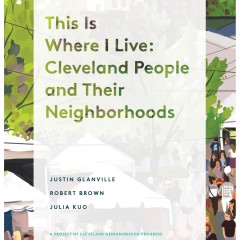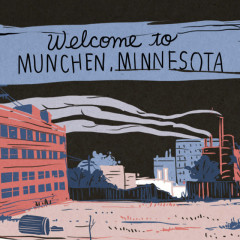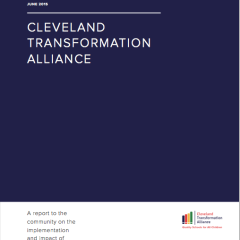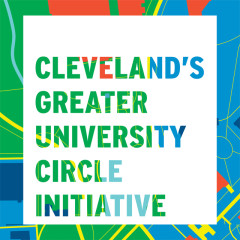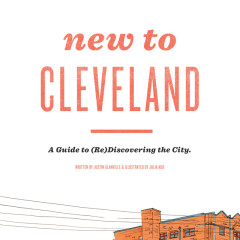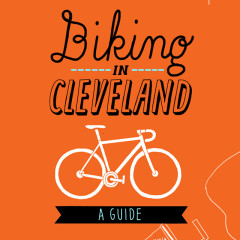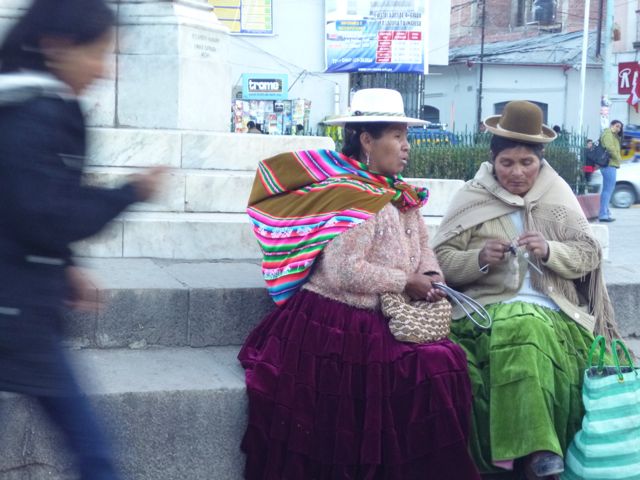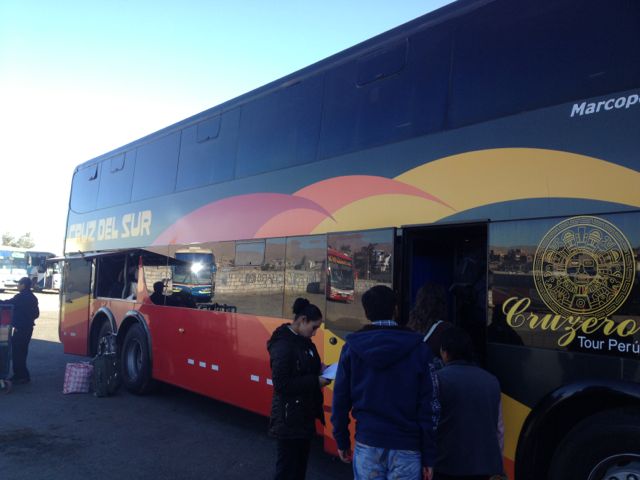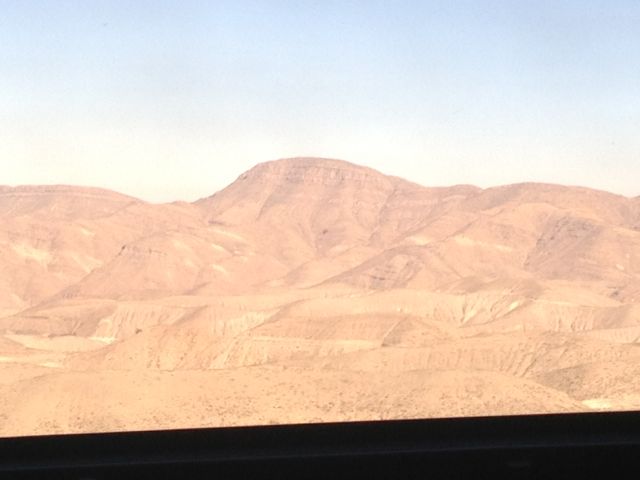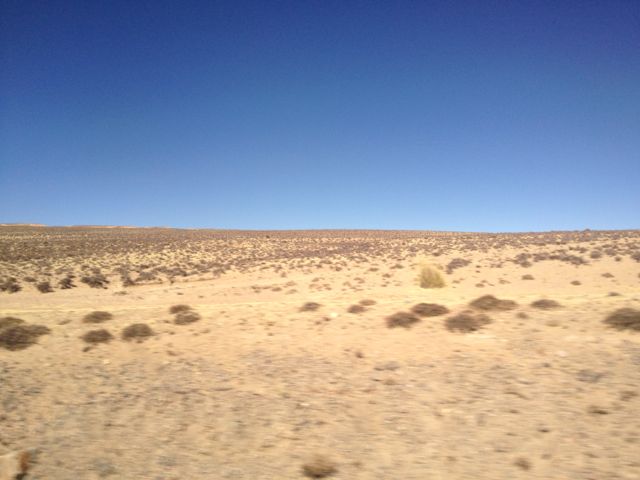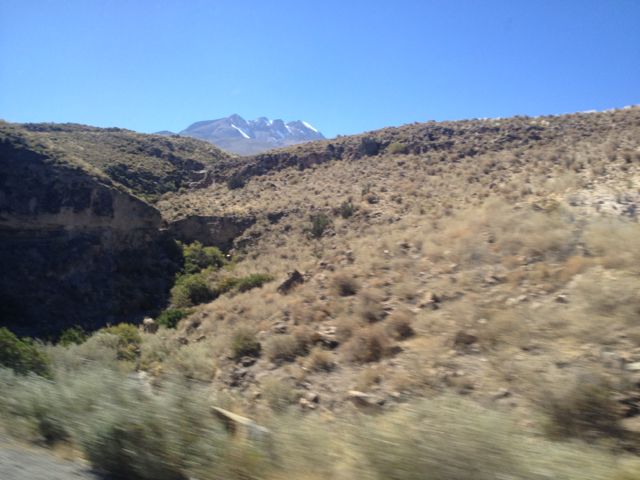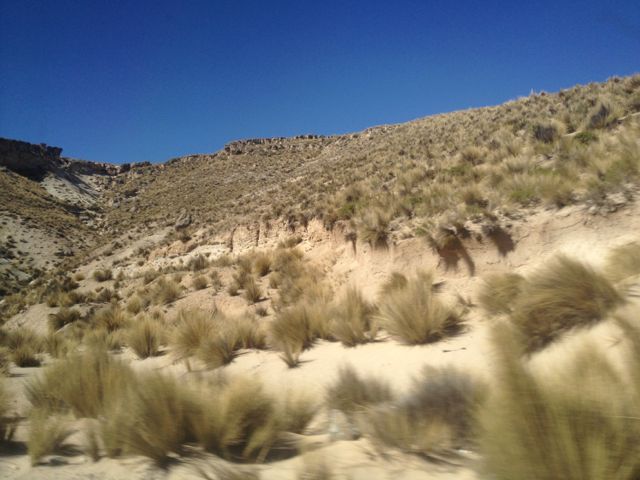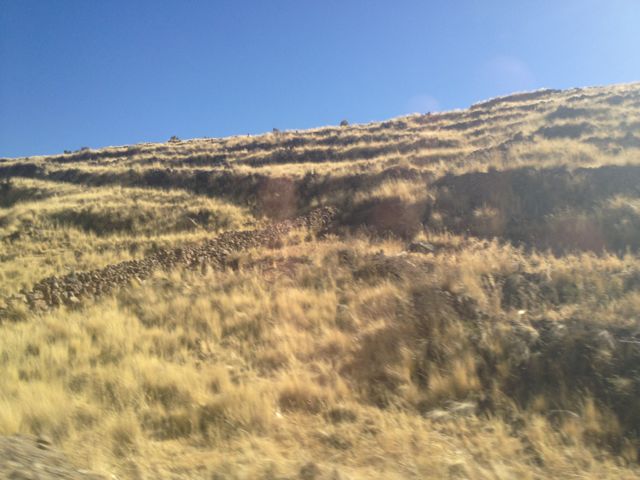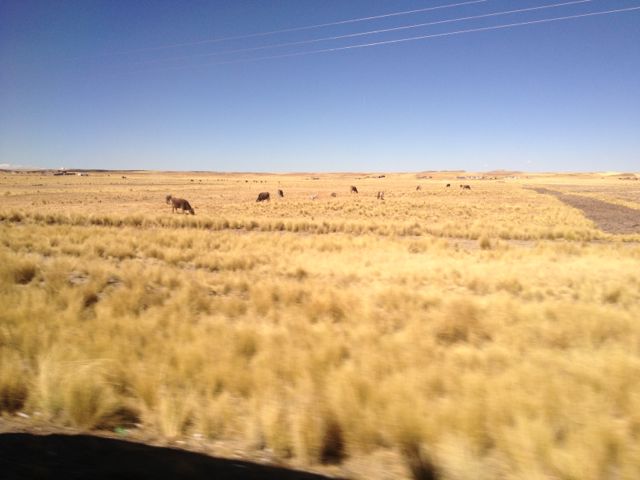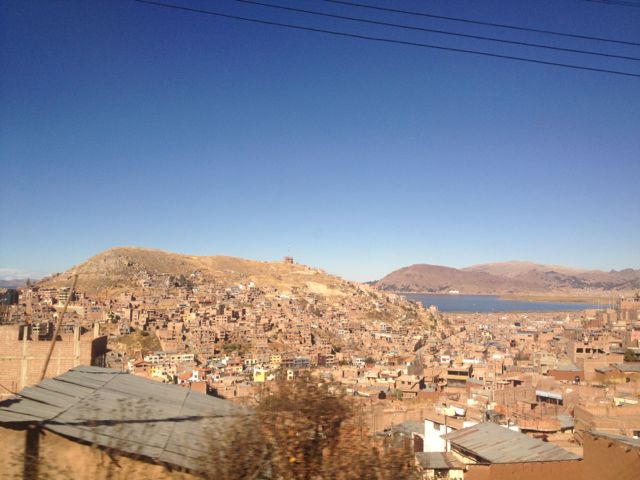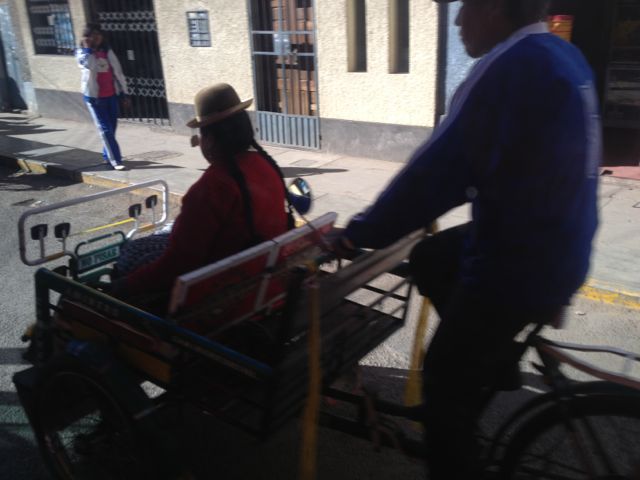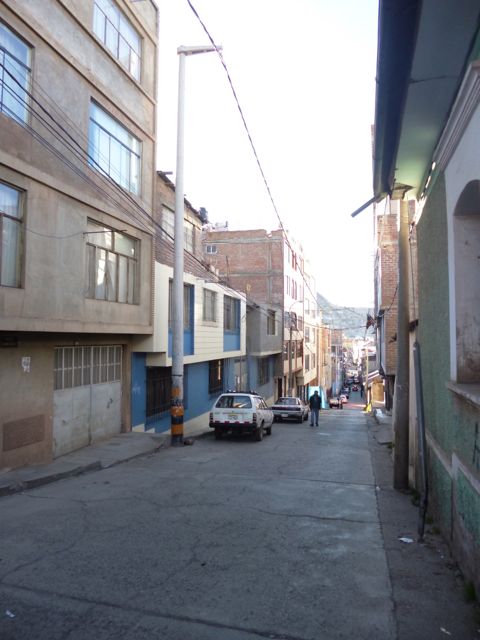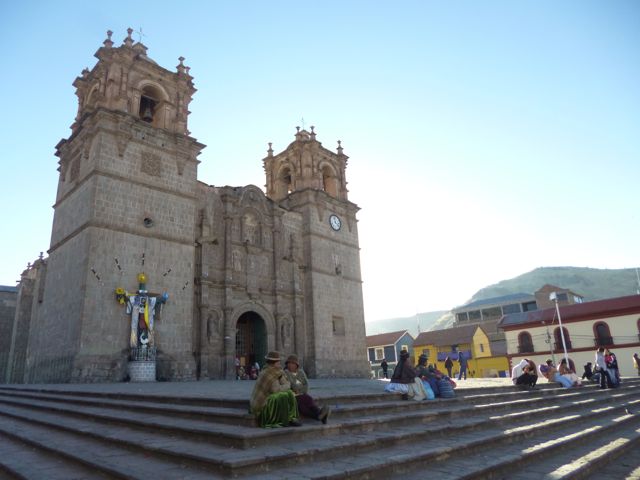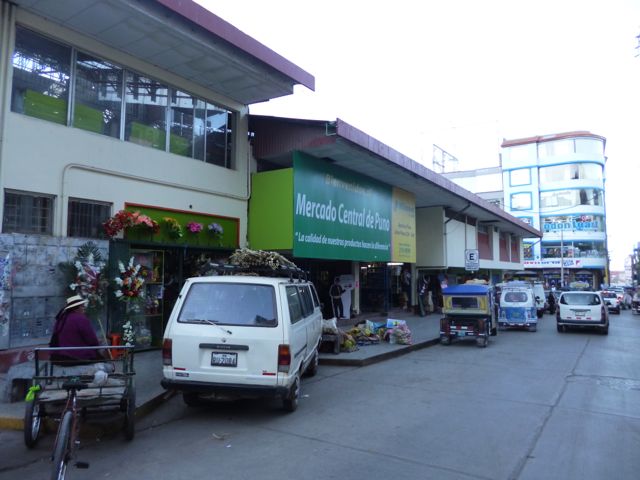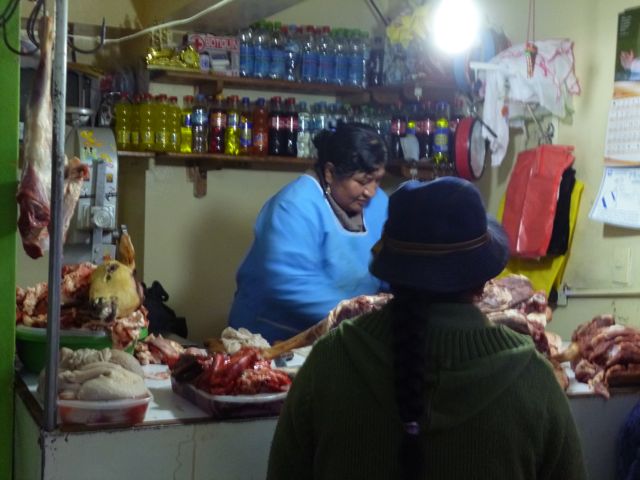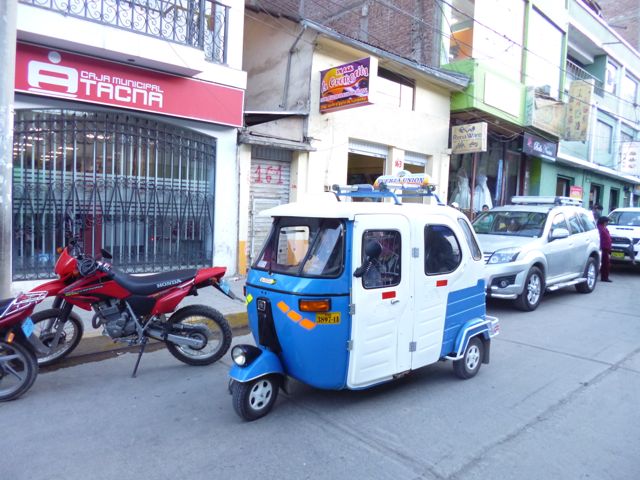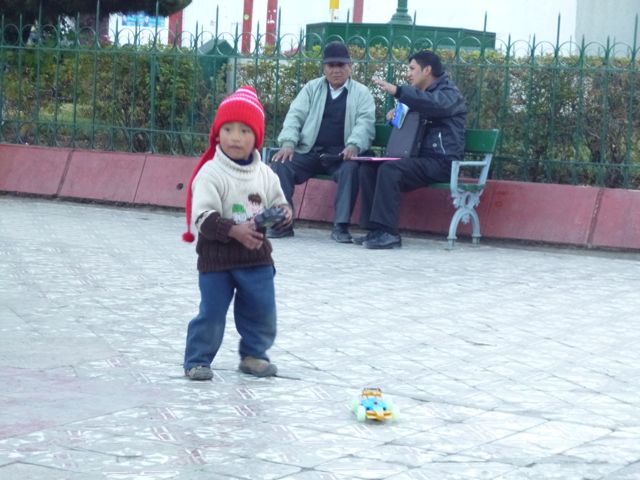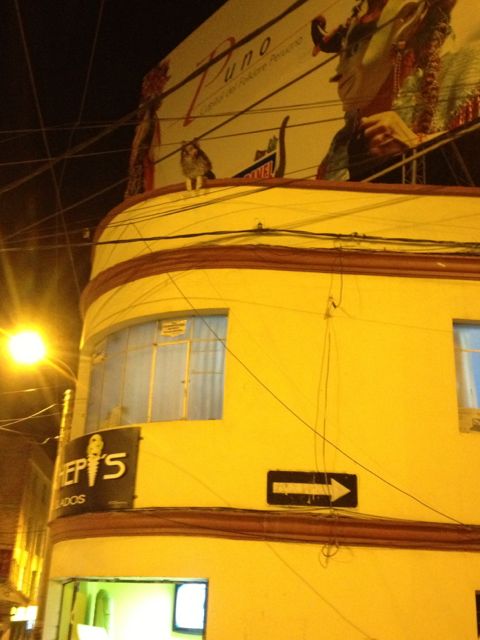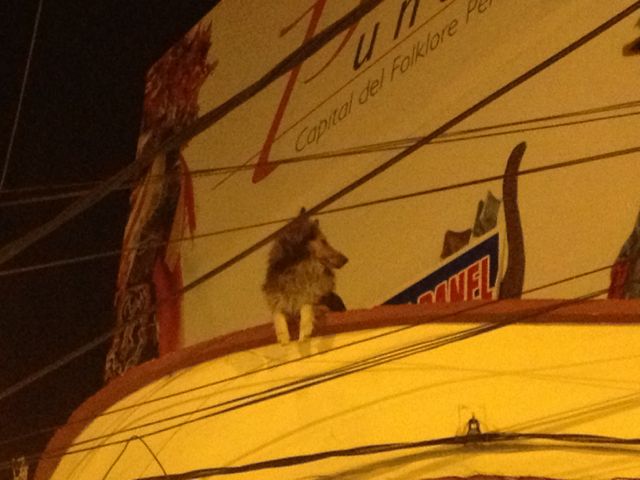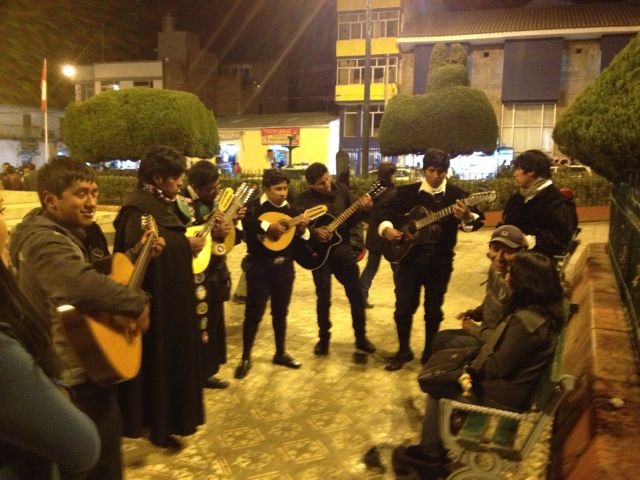Today I rode a bus that was determined to act like a plane, complete with TV monitors for each seat and an endless safety video and a well-coiffed stewardess who asked me to turn off my cell phone before we departed. (So it wouldn’t interfere with Bus Traffic Control I guess?)
This would be the bus that would take me from Arequipa to Puno (cost: about $25 for the six-hour trip, including a little snack). And I guess it makes sense, in a way, that they showed a big long safety video, especially since yesterday Alfredo my Spanish teacher told me that more people have died in Peru in bus accidents since 2003 than died in all the acts of terrorism that rocked the country during the 1980s and 1990s. I think that’s mostly on city buses, fortunately — not these big intercity behemoths.
One funny thing about the safety video was that it made a point to tell you only to urinate in the toilet. Thankfully, it didn’t explain the consequences of disobeying.
We left the outskirts of Arequipa and began our inexorable climb. In fact, we’d climb some 5,000 feet over the course of the trip — almost a mile. Arequipa is high, but Puno is high, about 12,500 (more than two miles) above sea level.
I still felt fine stomach-wise, though my nasal passages have shriveled to dried husks. There’s zero humidity this high up in the mountains — at least in the dry season, which we’re in now. I’ve found myself wondering, often, if there’s such a thing as nasal moisturizer.
The hours passed, and our big cruise ship of a bus wheezed higher and higher into the Andes. The landscape was monochromatic red-brown, Martian, the only sign of water or moisture the snow on the more distant peaks.
A few times, I saw plumes of volcanic steam rising from these higher peaks, a constant reminder that this is a still-volatile, still-forming area of Earth.
Each time it seemed like we couldn’t possibly go any higher, that we’d reached the top of the horizon line, there would come another incline, another straining of the bus’s engine, and we’d ascend more. Cacti and scrub grass started to become more prevalent.
The bus was playing some crappy Nicolas Cage movie and I couldn’t turn the volume down, so I pulled up Franz Schurbert’s Winterreise song cycle on my iPhone. Mostly because I thought I’d find it the least distracting of anything I owned while I looked out the window and journaled. Somehow, the stark German songs fit the alien landscape. And it is winter here — even if this winter looks very different from Cleveland’s.
Vicuñas, a species of small Andean camel, grazed in small packs along the side of the highway. They’re cuter than llamas, if you ask me. And apparently if you ask Peruvians, because the vicuña is the national animal. The desert grasses looked like tiny brown Christmas trees.
At one point we passed a woman and a small girl in traditional Andean dress — all brilliantly colored cotton and top hats. They were selling drinks from a cart to passersby, all alone in this unforgiving landscape. My heart went out to them, the difficulty of their lives, but I don’t know if they needed it. They were smiling, seemed happy to be together.
After about five hours, we passed through Juliaca, a red-brick dust storm of a city not far from the shores of Lake Titicaca. It was much bigger than I’d imagined, and yet still had the feel of a frontier town. We passed through enormous markets selling fruits and nuts. I found myself looking for vegetables, but there were none to be found. The idea of vegetables and salads have become somewhat mirage-like in my mind, something that today especially I seemed to be coveting. Salads. That’s all I’m going to eat from here on out. Things that are green and that were recently alive, instead of white and harvested long ago and processed or fried, killed and re-killed.
Puno was another half hour away, across a brown and gently rolling plateau. It reminded me of Iowa, if you took Iowa and raised it a couple miles in the air and let it hang dry. I hadn’t expected rainforest up here, but I was also surprised to find the country so arid. I guess I’d expected flashes of brilliant blue and white, broken by pine-tree green: like what you’d see in the American Rockies.
And still we were climbing. I think in all our six hours on the road, the driver’s foot never once relented from the accelerator pedal. My head felt full. Not throbbing exactly, but like the dry atmosphere had snatched away any trace of oxygen or moisture inside it. I’d been drinking water all day but my thirst, and the landscape’s, just sucked it all away.
As we drove through the outskirts of Puno, I got my first real views of Lake Titicaca. Puno itself clung to some steep hills on the lake’s shores, its buildings made of bricks almost the exact color of the earth.
Titicaca (haha funny name) is the biggest lake in South America — and about twice the size, in water volume, as Lake Erie (!).
The street life here was just as active as Arequipa’s, but more foreign. Mostly due, again, to the older women in traditional Andean dress, and the proliferation of cool methods of transportation like rickshaws.
I was met at the bus station by the owner of the hostal where Seth and I would be staying that night. The hostal, Kuntur Inn, was at the top of a hill and the couple who run it couldn’t be sweeter or more welcoming. I immediately felt at home. (Single rooms with private bath: About $40 a night.)
When I stepped outside to wander the town, I was shocked by how cold it was — due mostly to the elevation. Temperatures here fall below freezing at night, but even in mid afternoon it couldn’t have been more than 50.
The architecture and urban form are nowhere near as refined as Arequipa — this is mostly a post-colonial city — but Puno has its own ramshackle charm.
Here’s the lovely cathedral on the Plaza de Armas:
I visited the Mercardo Central, and finally found some vegetables. I bought some carrots because they’d keep well. I’d also Googled “Puno good salads” at the hostal, and found a couple ideas where to eat tonight.
Horrors in the meat section of the market. Check out the severed head to the left, buck teeth and all.
Does anyone know WHERE ON EARTH I can buy one of these? This is what I want to drive around in when I get home.
I took a break in the Parque Pino, which is sort of a more local, less-touristy version of the Plaza de Armas, and found the same joyful street life I’d witnessed in Arequipa.
I huffed and puffed back up to the hostal — definitely feeling that extra mile of altitude since Arequipa. And hooray — my friend Seth showed up not long afterward. It was great to see a familiar face after 10 days alone. I’d relished my solitude in a way, but I’m also looking forward to having a bit of a break from myself.
We went out for dinner at a place called Pizza e Pasta, one of the places Google had told me would have good green salads. In fact, it did — and decent brick-oven pizza too. There are a ton of pizzerias in this city. Not sure why. Part of it must be to serve the gringos, sure, but that can’t explain all of them.
On our walk, we saw a wonderful sight: A collie dog, on the roof of one of the buildings on the Plaza de Armas, calmly surveying the scene.
And on our way back through the Parque Pino, we encountered a group of young folklorica musicians, serenading a couple on a bench. Puno is known for its folk music; there are a few festivals every year. The music was nice — 3 mandolins and 3 guitars, with harmonized singing — but what charmed me most about this performance was the complete lack of irony. Nor was it a performance for tourists. These guys really seemed to be serious about honing their craft.
I think that’s a big part of what I love about Peru: How earnest it is. An utter lack of pretense against a backdrop of all this natural beauty.



